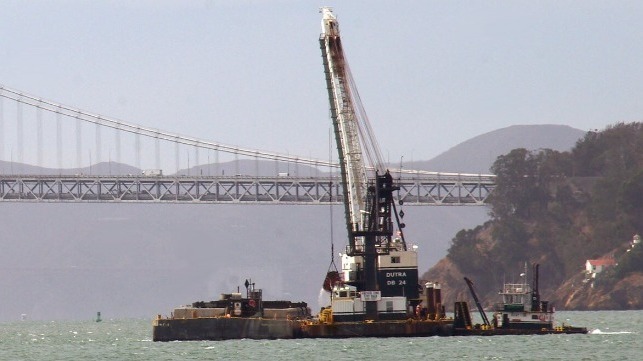Port of Oakland to Benefit Wetlands Through Sustainable Dredging

[By: Port of Oakland]
The Port of Oakland deepens its commitment to sustainability by sending more dredged sediment from the Oakland Seaport to a Solano County wetland restoration site. Montezuma Wetlands will receive an approximately $2.1 million grant over the next three years to allow more Port-dredged sediment to go towards restoring wetlands and endangered species habitat. Regulations require a minimum of 40% of sand, silt, and mud dredged from berth maintenance to go towards beneficial reuse. Berths and approach channels must be up to 50-feet-deep to accommodate the big vessels that call the Port today.
“We are committed to expanding our sustainable dredging initiative,” said Port of Oakland Director of Environmental Programs and Planning Colleen Liang. “Restoring and maintaining the Bay’s ecosystem provides many environmental benefits to the region.”
Montezuma Wetlands LLC, located in Suisun Bay, is a private initiative focused on wetland restoration using the millions of cubic yards of sediment dredged annually from Bay Area ports, harbors, and shipping channels. Due to its one-of-a-kind location within the SF Bay Estuary, restoration of tidal wetlands at the Montezuma Wetlands Project has been described by scientists as vital for meeting the regional recovery goals of many listed species. Some of these special-status species include the salt marsh harvest mouse (Reithrodontomys raviventris), California least terns (Sterna antillarum browni), Delta smelt (Hypomesus transpacificus), longfin smelt (Spirinchus thaleichthys), and various salmonids.
The San Francisco Bay Restoration Authority granted the funds, which will make it more cost-effective for the Port to send additional sediment to the project site.
“We’ve had a wonderful relationship with the Port and its staff dating back to the 1990s,” said Doug Lipton, Chief Scientist for the Montezuma Wetlands Project, and Owner and Principal Scientist of the Lipton Environmental Group. “Our relationship developed into a strong and trusting business collaboration when Montezuma became the Port’s preferred alternative disposal site for the 50-foot channel deepening project, which diverted a total of 2 million cubic yards of sediment. That project essentially launched Montezuma, as it was the very first project that delivered sediment to us (in December 2002).”
The products and services herein described in this press release are not endorsed by The Maritime Executive.
